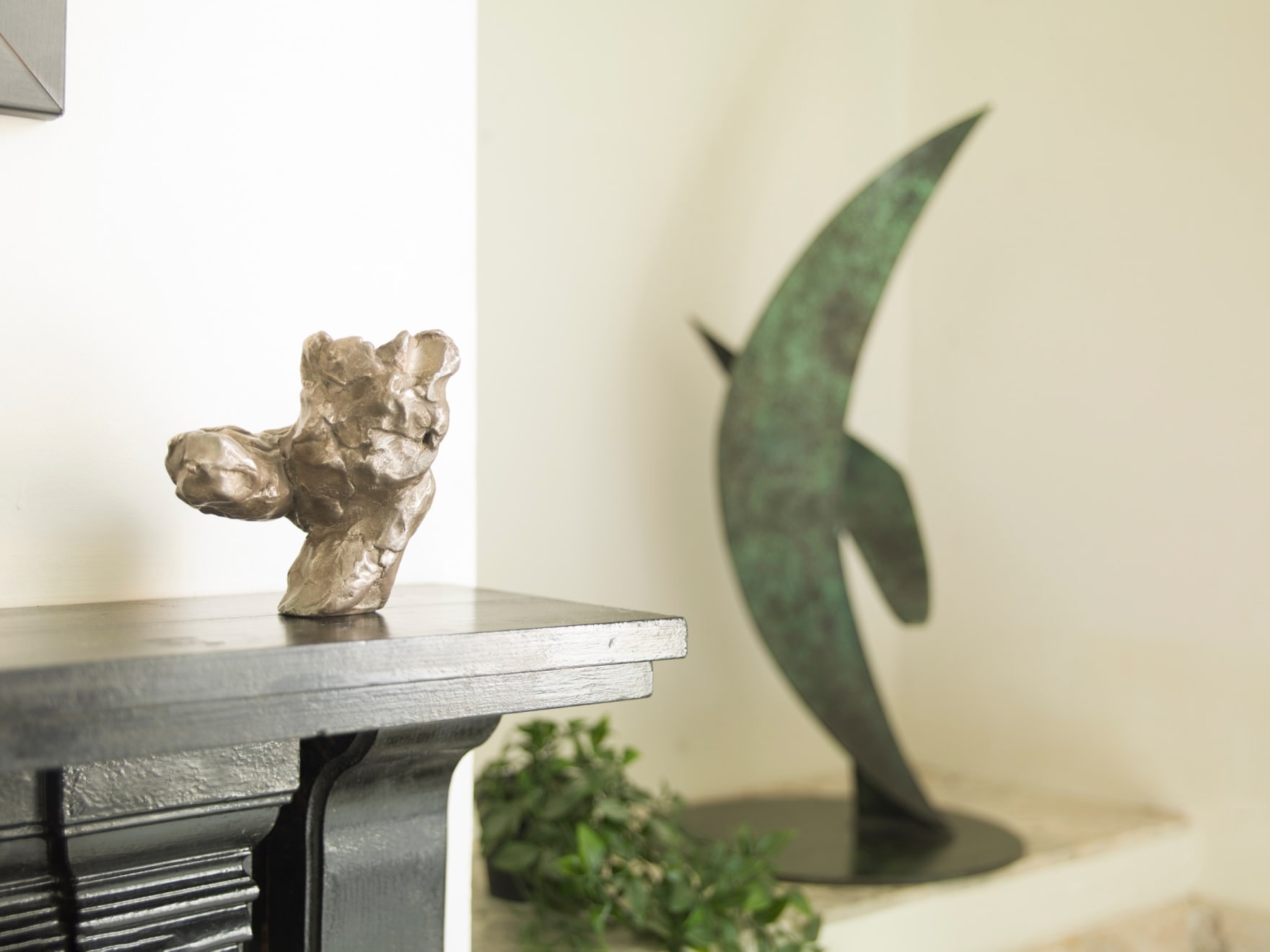William Tucker RA b. 1935
Dancer after Degas, 2002
Sterling Silver
14.5 x 13 x 11 cm
5 3/4 x 5 1/8 x 4 3/8 in
5 3/4 x 5 1/8 x 4 3/8 in
Edition 10 of 10
Copyright The Artist
Currency:
Further images
'Dancer After Degas' is a theme which Tucker has frequently revisited throughout his career in both his sculpture and drawings. This particular work cast in Sterling Silver was commissioned in...
'Dancer After Degas' is a theme which Tucker has frequently revisited throughout his career in both his sculpture and drawings. This particular work cast in Sterling Silver was commissioned in 2002 for 'Sterling Stuff' an exhibition which invited over thirty artists to submit a work cast in silver. In 2016, Tucker received a private commission to realise, based on this model, a monumental 'Dancer After Degas' in bronze for a site in Edinburgh. Scheduled to be completed in Autumn 2019, this work will be Tucker’s largest to date.
William Tucker was born in Cairo in 1935 and moved to England with his family in 1937. Between 1958-60 he studied sculpture at St Martin’s Schools of Art under the maverick leadership of Frank Martin and Anthony Caro. Fellow students included David Annesley, Phillip King and Michael Bolus.
Tucker’s innovative early sculpture presented abstract forms in painted steel or fiberglass and placed directly on the ground. Typically, his works of the 1960s consist of repeated geometric elements assembled into abstract configurations, with colour used to articulate outline and volume. In 1966 Tucker’s 'Meru' series was included in the seminal exhibition Primary Structures at the Jewish Museum in New York and in 1972 Tucker represented Britain at the Venice Biennale.
His highly successful book 'The Language of Sculpture' was first published in 1974 and evolved from a series of lectures he gave whilst he was Gregory Fellow in Sculpture at the University of Leeds (1968-70). Moving to New York in 1978, Tucker established his reputation with a series of sculptures directly modelled in plaster and cast into bronze, at first abstract like the steel forms from which they had developed, but increasingly suggestive of the human figure in their massive presence. He has found a unique balance between the figurative and the abstract, with truly powerful results.
The way these sculptures stand or rest on the ground, and the way they address the onlooker, the ambiguity of their reference to the human figure brings the possibility of a new kind of figuration in sculpture in which the image emerges from both an inner perception of the body and an outer perception of volume and surface. These works appeal to both touch and sight, suggesting at once part of the body and the whole body, but resisting conclusive definition.
Pangolin London is delighted to represent William Tucker in the UK.
William Tucker was born in Cairo in 1935 and moved to England with his family in 1937. Between 1958-60 he studied sculpture at St Martin’s Schools of Art under the maverick leadership of Frank Martin and Anthony Caro. Fellow students included David Annesley, Phillip King and Michael Bolus.
Tucker’s innovative early sculpture presented abstract forms in painted steel or fiberglass and placed directly on the ground. Typically, his works of the 1960s consist of repeated geometric elements assembled into abstract configurations, with colour used to articulate outline and volume. In 1966 Tucker’s 'Meru' series was included in the seminal exhibition Primary Structures at the Jewish Museum in New York and in 1972 Tucker represented Britain at the Venice Biennale.
His highly successful book 'The Language of Sculpture' was first published in 1974 and evolved from a series of lectures he gave whilst he was Gregory Fellow in Sculpture at the University of Leeds (1968-70). Moving to New York in 1978, Tucker established his reputation with a series of sculptures directly modelled in plaster and cast into bronze, at first abstract like the steel forms from which they had developed, but increasingly suggestive of the human figure in their massive presence. He has found a unique balance between the figurative and the abstract, with truly powerful results.
The way these sculptures stand or rest on the ground, and the way they address the onlooker, the ambiguity of their reference to the human figure brings the possibility of a new kind of figuration in sculpture in which the image emerges from both an inner perception of the body and an outer perception of volume and surface. These works appeal to both touch and sight, suggesting at once part of the body and the whole body, but resisting conclusive definition.
Pangolin London is delighted to represent William Tucker in the UK.
Provenance
From the artistExhibitions
William Tucker: Sculpture and Drawing, 2010, Pangolin LondonMasterpiece Art fair, London 2019.











